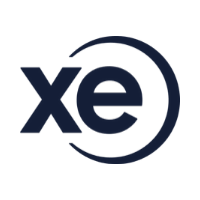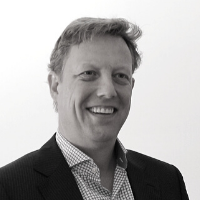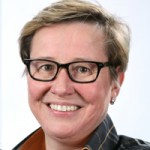13-08-2020 | treasuryXL | XE |
Online money transfer can be confusing. Luckily, we’re here to clear things up for you.

If you’ve never sent money online before, it can seem pretty confusing. You enter in your information from your home, on your computer or on your mobile phone, and your money somehow travels from your bank account to your friend’s on the other side of the world.
There’s quite a lot of information online about money transfer, but unfortunately, not all of it is accurate. Been doing your research, but not sure what to believe? Let us help you out. We’re going to share some of the most common misconceptions about online money transfer, and then let you know what’s really the case.
Myth #1: You should check the exchange rates and send money at a particular time of day.
We’ve discussed this concept before, but we think it bears repeating: the time of day you check the rates has absolutely no bearing on the rate that you’ll get. The global currency markets never sleep, and it’s likely that at any given time, something is happening that could affect the value of your chosen currencies.
There’s no objective “best time” to send a money transfer. That’s going to depend entirely on the values of your chosen currencies, and since those can change at any moment, it’s not going to be easy to determine when the rates will be in your favor. You can study the markets, but you can’t predict the future!
If you are interested in knowing the best time for your transfer, you can set up Rate Alerts for your currency pairs that will alert you when your target rate has been reached.
Myth #2: You’ll always get the same rate, so you don’t need to shop around.
On the other hand, some people think that checking the rates is little more than a formality. After all, global currency values are the same around the world, so wouldn’t the exchange rate always be the same?
You would think so, but that’s not quite the case. While the mid-market rate is the exact midpoint between a currency’s buy and sell rate (also commonly referred to as the “true rate” of exchange), not every provider offers you the mid-market rate. Many services (including banks and wire transfer providers) add margins onto their rates that will benefit them. And it’s not always made clear when you look at their rates. So before making a transfer, check our Currency Converter to see what the real rate of exchange is. You could be surprised!
Myth #3: Online money transfers aren’t as secure as bank and wire transfers.
We get it. You trust the bank to hold your money, so naturally you’re going to turn to your reliable local bank and think that they’re the most trustworthy organization to handle your money transfer.
Banks are absolutely trustworthy, but they aren’t always the best choice for handling money transfers. In addition to the unfavorable exchange rates that we already mentioned, service fees and limited working hours could lead to you paying more money for a slower money transfer.
Additionally, online money transfer providers are no less secure than the banks. At Xe, we have enterprise-grade security measures in place and adhere to regulatory standards in every country that we facilitate transfers for.
Myth #4: Money transfers are complicated and take a long time to execute and complete.
This can be broken down into two separate thoughts:
-
The money transfer process is confusing, and it’ll take you ages to figure out how to send money.
-
Once you’ve sent your money, it’ll take days or even weeks for your money to reach its destination.
Both false!
Signing up for an account is completely free and takes just a couple of minutes. Once you’re registered, you’re ready to start transferring, which can be initiated in just a couple of minutes online or on the phone. Want to make the process even easier? Take a look at this list of everything you’ll need to make a transfer, before you start the process.
Additionally, online money transfers travel pretty quickly. Because you’re not working within bank service hours, you can initiate a transfer any time of day, any day of the year, and your money will reach its destination quickly. At Xe, our transfers take within 1-4 business days, often arriving within 24 hours, sometimes even within minutes.
Myth #5: Money transfer is expensive.
You will need to provide the funds for your transfer. But when it comes to additional costs, online money transfer is no more expensive than a wire transfer or bank transfer—it’s often less expensive. Between the straightforward rates and lack of excessive fees, what you see is what you get when you make an online transfer.
Get in touch with XE.com
About XE.com
XE can help safeguard your profit margins and improve cashflow through quantifying the FX risk you face and implementing unique strategies to mitigate it. XE Business Solutions provides a comprehensive range of currency services and products to help businesses access competitive rates with greater control.
Deciding when to make an international payment and at what rate can be critical. XE Business Solutions work with businesses to protect bottom-line from exchange rate fluctuations, while the currency experts and risk management specialists act as eyes and ears in the market to protect your profits from the world’s volatile currency markets.
Your company money is safe with XE, their NASDAQ listed parent company, Euronet Worldwide Inc., has a multi billion-dollar market capitalization, and an investment grade credit rating. With offices in the UK, Canada, Europe, APAC and North America they have a truly global coverage.
Are you curious to know more about XE?
Maurits Houthoff, senior business development manager at XE.com, is always in for a cup of coffee, mail or call to provide you detailed information.

Visit XE.com
Visit XE partner page
 About Jason:
About Jason:















